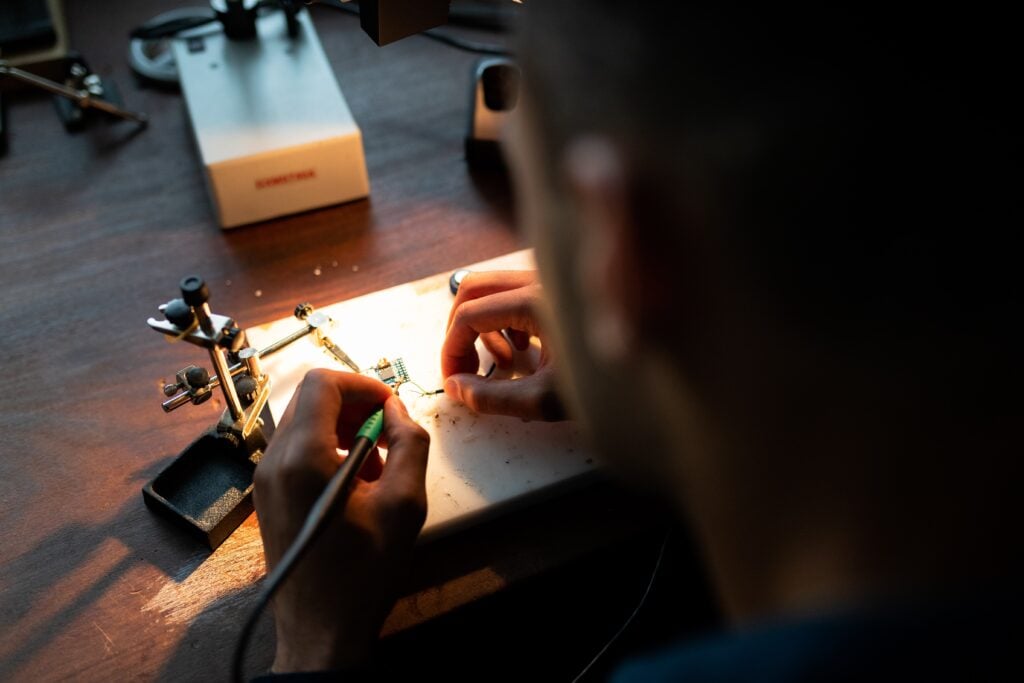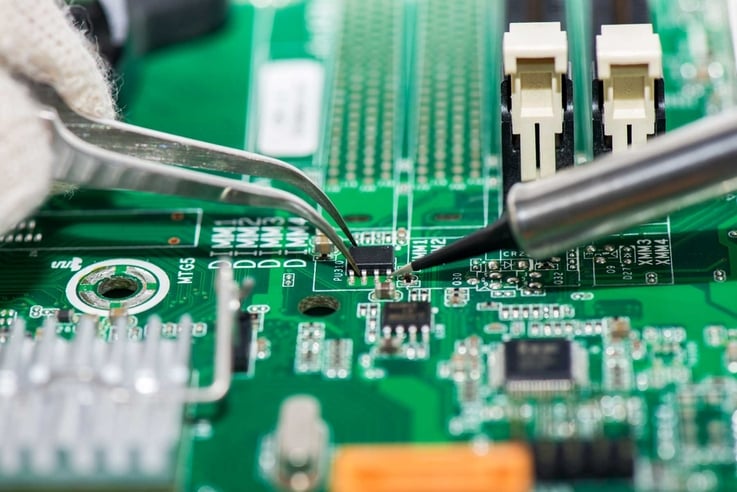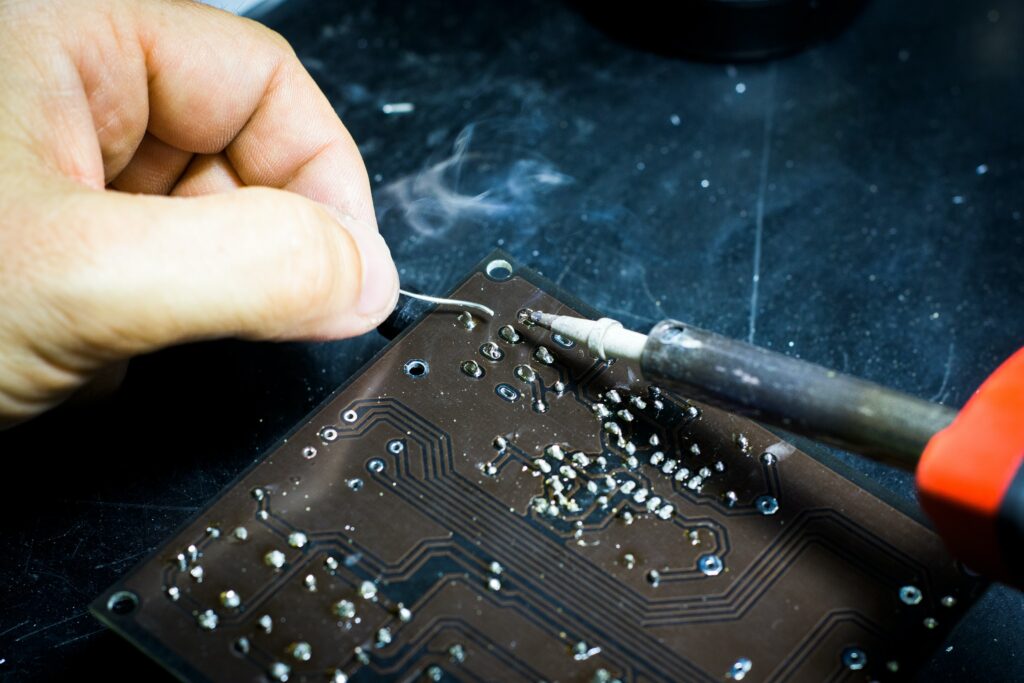Well, I’ve got to say it again, what is wrong with the existence of voids in solder joints? X-ray equipment is now being used all over the industry to check for these voids and you know what? They are finding some! Wow. Isn’t that something? That’s like looking at Swiss cheese and saying there are voids in the cheese. Yeah, so what? Is it a problem? Can you prove that it is a problem? Do you have data backing up your claim? Or is it just that they are there and we don’t want them? Man, am I glad you’re not inspecting bread because they’re in there also. Those voids! What are we supposed to do?
There are articles from all over the world explaining how they come about and what the problem is by having them, which is none by the way. Check the article “The Last Will and Testament of the BGA Void” by Dave Hillman, Dave Adams, Tim Pearson, Brad Williams, Brittany Petrick, Ross Wilcoxon, Dr. David Bernard, John Travis, Dr. Eevstatin Krastev, Vineeth Bastin and Nordson Dage, where they present data that refutes what many of the specifications are requiring. This is data, not anecdotal evidence, so we should pay attention.
Voids are truly a phenomenon in liquid physics, where you have two liquids, molten solder and some other non-metallic liquid, such as flux and carrying vehicles. When they get into a liquid condition in a confined space, where there is no escape for the nonmetal liquids, the solidification temperature of the molten metal is reached and you have entrapment, or voids within the homogeneous mixture of the solid metal. That’s the way it goes. If you don’t like it, change your process! Change the design!
It was stated a long time ago, that if you don’t want solder balls, don’t use solder paste because we did not have that many little tiny solder balls before, and we are not going to accept the condition now.
Yup, we’ve heard it before, but the answer is, we have to adapt. We have to improvise. So what do we do? We changed the specification to state that if the solder balls are entrapped in something and they are not going to move, or go anywhere, then they are ok. Kind of interesting how that problem was solved, or was it solved and we just adapted our acceptable condition and moved on? We still get questions as to the solder ball condition, but it is mostly an educational issue, or new people wanting to reinvent the wheel.
It has been shown that voids are stress relievers within the solder joint, implying that they provide the solder joints with some stress relief and don’t promote the propagation of cracks within the joints. Many stress tests were conducted over the years and they have all supported each other in the results and conclusions. Voids were not a problem. Yes, we’ve had some failures with solder joints and when voids were found they were accused of being the cause. Therefore, we need to look further into this reasoning as we demand many things from a solder joint. We want it to function mechanically and electrically, be sound, and be made quickly. The solder joint has to be metallurgically bonded to the basis material, be it either tin, copper, silver, nickel, brass, etc. and we need to create the inter-metallic compound, which allows the wetting between tin of the solder alloy and the basis material. We use visual appearances to determine whether or not this was accomplished. We ask things such as did the solder wet the surfaces? Did it wet the leads? Do we see any dewetting or no wetting conditions? Additionally, we look for hole fill. We look for heel fillets. As you see, the paradigm is visual observation.
Then through the process of continuous improvement, we now have some components we cannot see the solder joints visually, so we introduce the x-ray equipment to look for things we cannot visually see.
As my kids would say, “And how’s that working for you?”
You have all experienced going to the doctor, or the dentist, and have had x-rays taken. The interpretation is always done by someone who has been trained in interpreting the x-ray. By the way, have you ever noticed how clear those x-rays are? Now have the people looking at the solder joint x-rays been trained in the same fashion? I doubt it! Do we really know what we’re looking at, or are we looking for lighter areas in the pictures and assigning a determination of what we believe we saw? When a doctor or dentist fixes the problem, data is collected from the actual site that they get to see, such as the bone, then it is being set or operated upon. A dentist may see a cavity in a tooth or crown preparation.
Do we ever cut open those joints where we see something lighter? This would help to prove one way or another whether a problem does or does not exist, with what we saw in the x-ray. My guess is the answer is no, as this would be a destructive function and we don’t want to scrap the unit, so we depend upon something seen by someone who has susceptible training in the interpretation of what they are looking at, and we take that for the gospel truth.
I know we are into this type of process, and we are rejecting product that is fully functional to satisfy the beliefs of some, but I believe we need to push back and educate our customers and ourselves to prove that all of our concerns are based on fear and not fact.
Leo Lambert
Vice President and Technical Director


About EPTAC
EPTAC is an internationally recognized leader in solder training and IPC certification, providing professionals with the skills to accelerate their careers and businesses and the talent to succeed. For over 35 years, EPTAC has been helping corporations increase quality standards, improve productivity, and maximize profits.
With 24 locations in North America, EPTAC continues to expand its offerings and exceptional instructional staff to provide easy access to knowledge and skill-based programs when and where the industry demands it. Access our scheduled programs through our website or schedule your own corporate on-site training. For more information, call 800.643.7822 or contact us.








